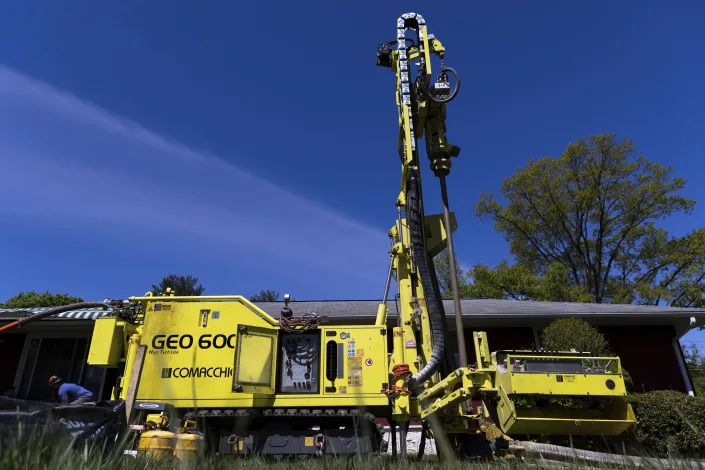Neia Balao
Thu, July 13, 2023

On July 12, Kaaviya (@kaavikiwi), a South Indian model based in Los Angeles, took to TikTok to discuss the “scarcity mindset” she sees people operating in, as well as colorism within the Desi community.
“Eat with me while I say controversial s*** about the Desi community on social media,” Kaaviya begins.
@kaavikiwi
if yall wondering why i’m always saying “south indian south indian south indian” THATS WHY.♬ original sound – kaaviya
Being in spaces that “are not intended” for them, Kaaviya says, can lead to “shame.”
“I think a lot of people in our community feel shame when they enter spaces that are not intended for us, aka entertainment, beauty, modeling, all of that,” she says. “The last thing I need is insecurity. People around me are operating in a scarcity mindset, and the mindset of those around you is contagious.”
Kaaviya then shares that she wanted to walk for an Indian bridal show but was told she “wasn’t a good fit.”
“I watched the show and I saw some girls in the show and I noticed something about the show, which was that every single girl that was casted was North Indian, super-fair skin,” she explains. “The way that that felt to me was that the Indian standard of beauty, which is mainly based on skin color, still exists within our community.”
Per SodhaTravel, North India, which is landlocked, is “generally defined by the Hindi-speaking belt of Uttar Pradesh, Jammu and Kashmir, Uttarakhand, Himachal Pradesh, Rajasthan, Delhi, Punjab, and Haryana.” Surrounded by the Arabian Sea and the Indian Ocean, South India “includes the states of Tamil Nadu, Andhra Pradesh, Telangana, Karnataka, and Kerala.”
According to a Vogue India article, Indian beauty brands previously neglected to offer foundations or concealers that catered to darker complexions.
“Colourism in India is embedded within a deep history of class and caste discrimination, a history that supported the idea that fair skinned people were more intellectual, more attractive, and held a higher place in society than darker skinned people,” reads the article.
‘You don’t have to just cater to your particular niche or niche you think you’re supposed to be in’
Kaaviya argues that in order for her to “break that shell,” she “needs” to ensure that she doesn’t surround herself with people that “still have very outdated mindsets.”
“The idea of being in a group where I’m only creating content for other Desi people and putting myself in a box really is not something that’s congruent with my long-term goals,” she explains. “I want to be able to teach other minorities that you don’t have to just cater to your particular niche or niche you think you’re supposed to be in.”
Women of color, the South Indian model believes, should feel empowered to create content for everybody.
“I make a lot of brown-girl-friendly content and I’m very passionate about that because there’s a lack of brown-girl content,” she says. “But I also believe in my ability to make content for a very wide audience.”
Bollywood, the Indian film industry based in Mumbai, features “stereotypical portrayals of South Indians,” says South Indian writer Roshni Mohan of the Michigan Daily.
“Bollywood’s stereotypes about South Indians are blatantly harmful, especially since there is so much previously established anti-South Indian rhetoric in the North alongside systemic discrimination and the ‘jokes’ just further the rhetoric,” writes Mohan. “The stereotypes only further alienate us from the others in the North instead of uniting us all as Indian, which in turn pushes the narrative that we are ‘less Indian.'”
‘Real, I’m glad people are speaking up about the desi community in general and it’s values’
TikTok users have shown their gratitude for Kaaviya’s video and for her advocacy for increased South Indian representation in media, modeling and beyond.
“i’ve witnessed many situations where south indians— regardless of their skin color, would be excluded, simply bc they’re south indian,” @sugarcookiesruthi revealed.
“I used to get bullied for having darker skin and curly hair that it made me so insecure so thank you for sharing this!!” @rahini_nedunuri commented.
“Real, I’m glad people are speaking up about the desi community in general and it’s values,” @joyy27_g wrote.























